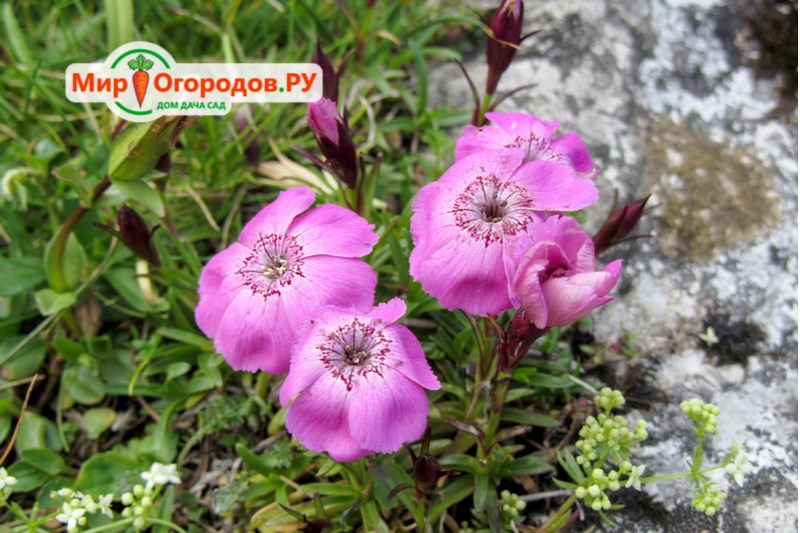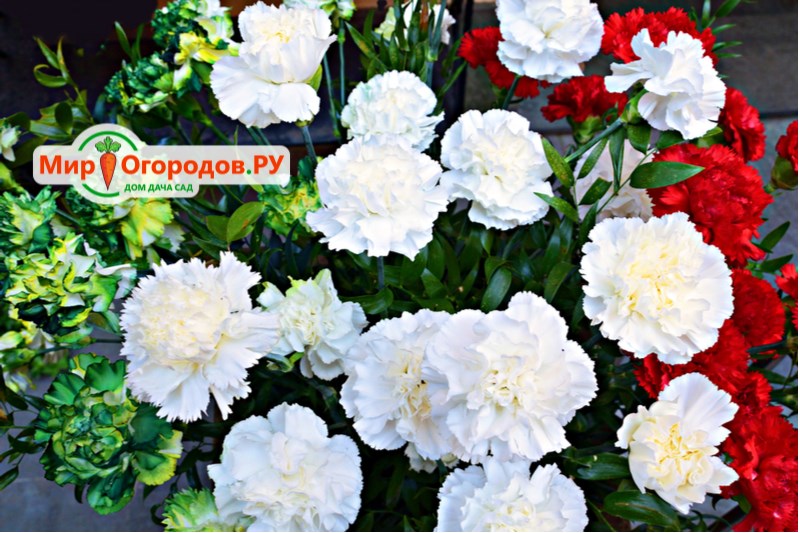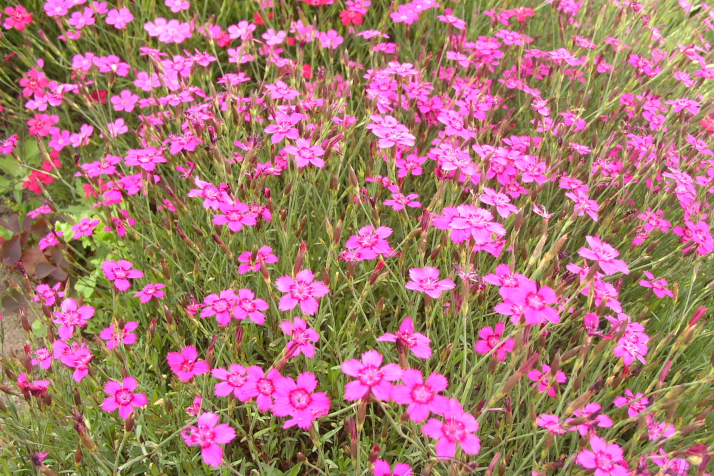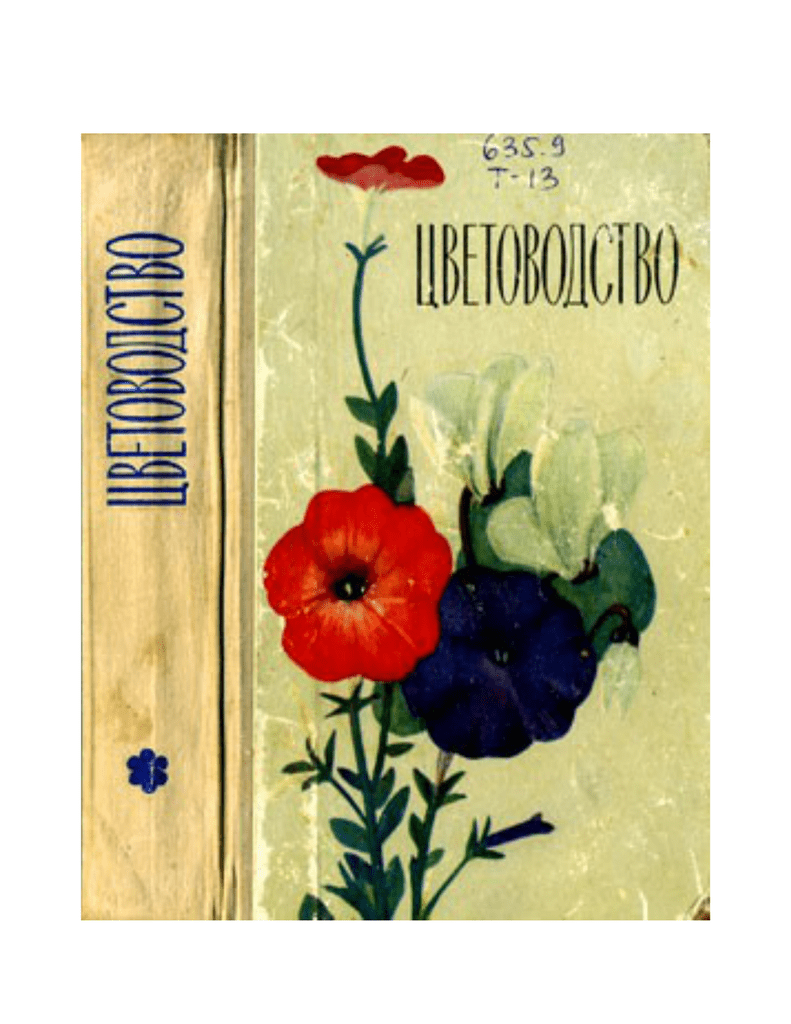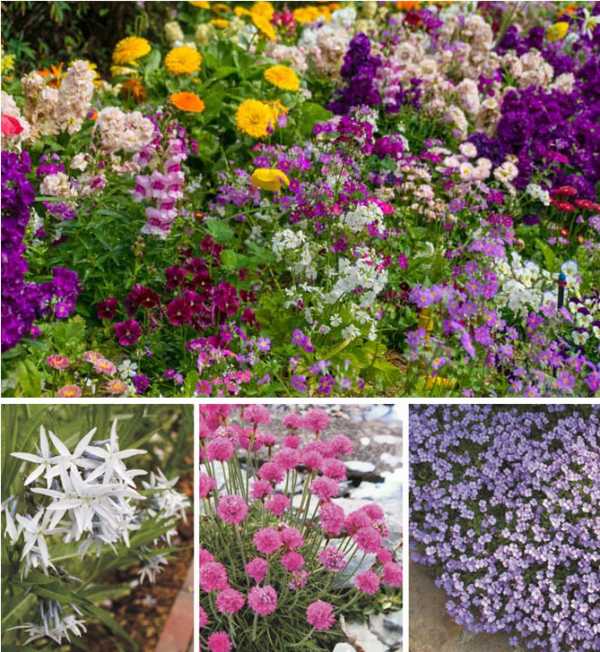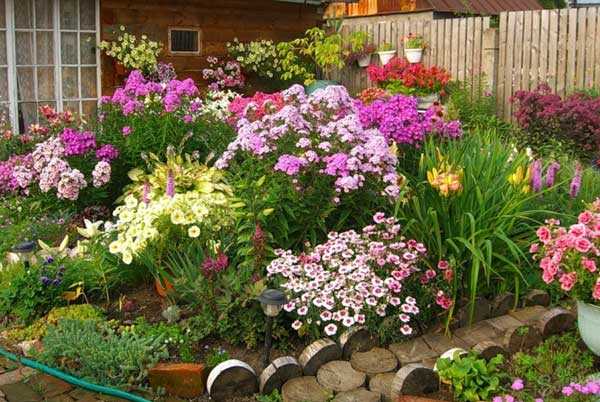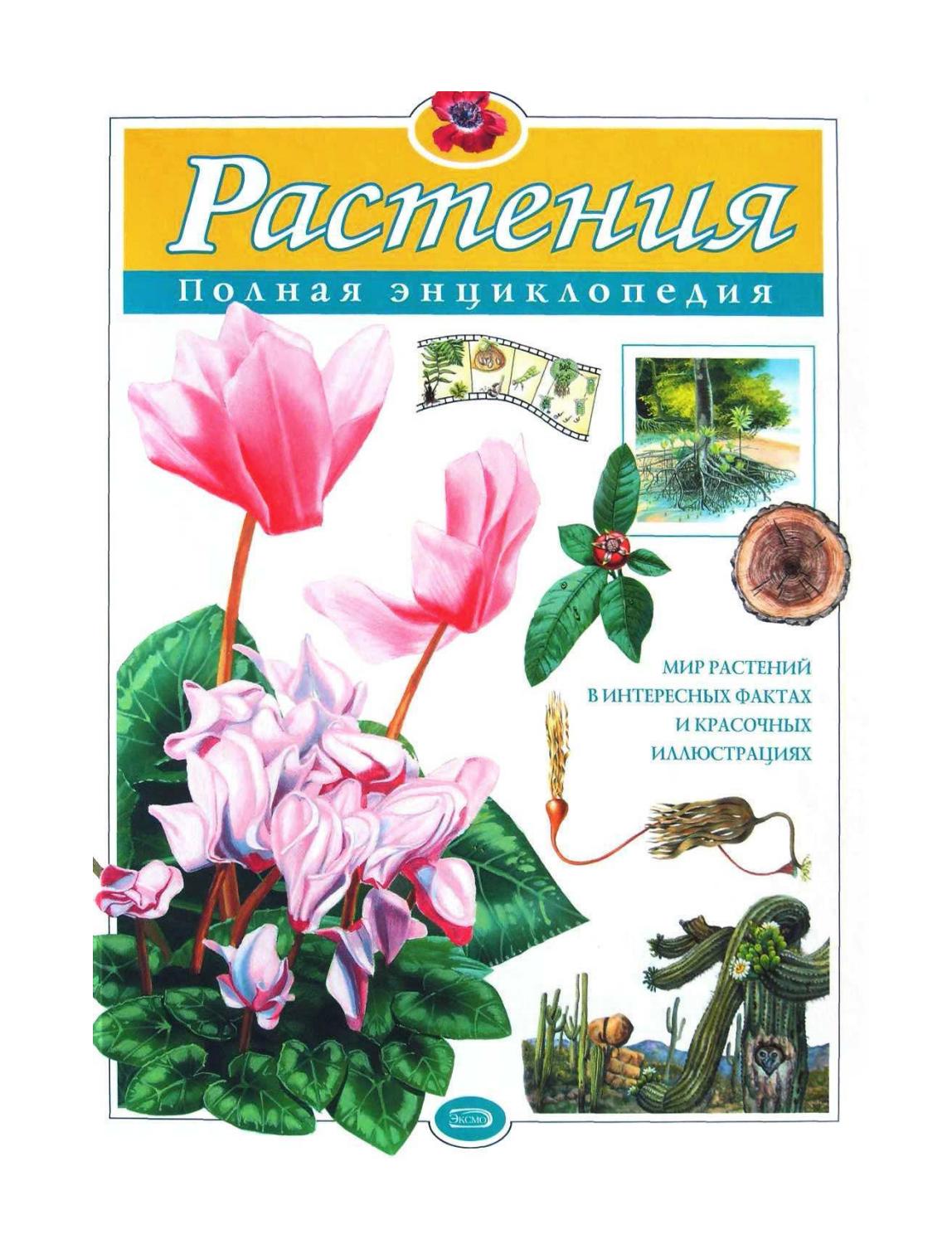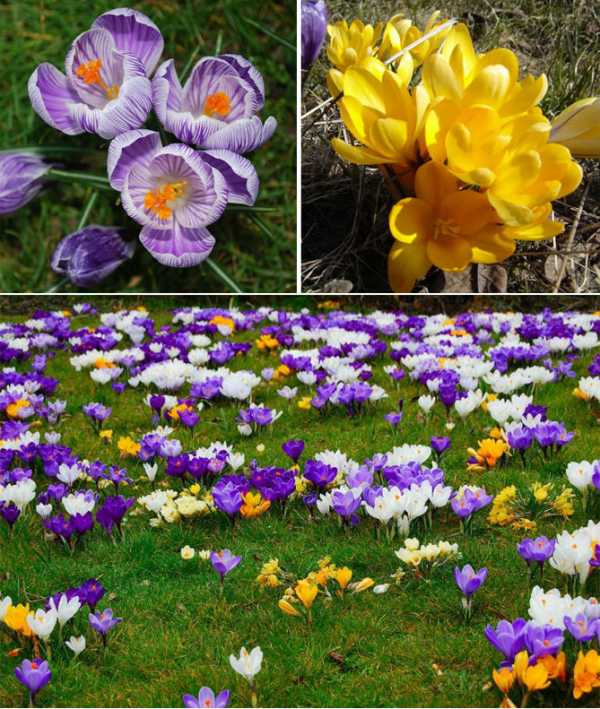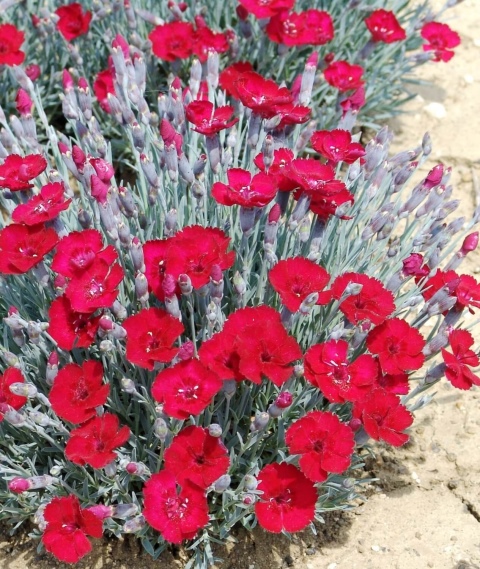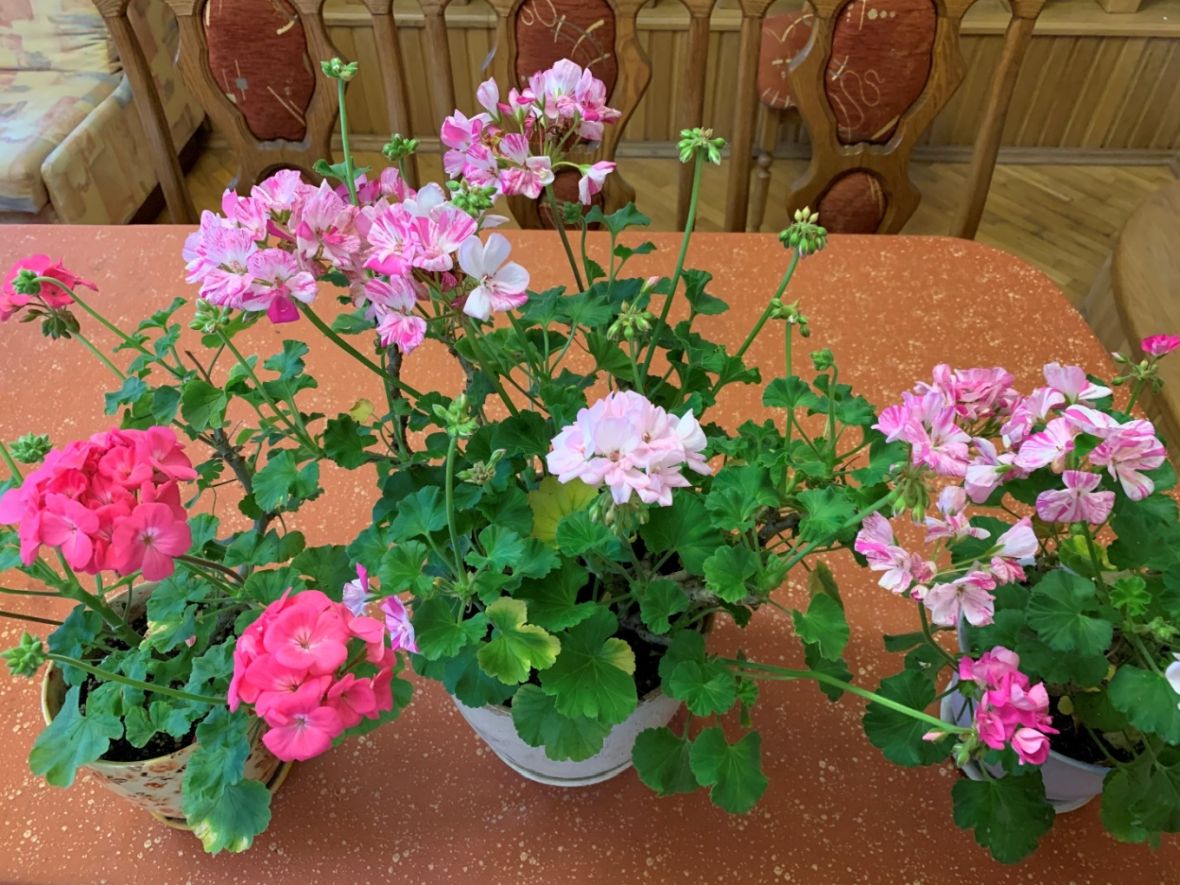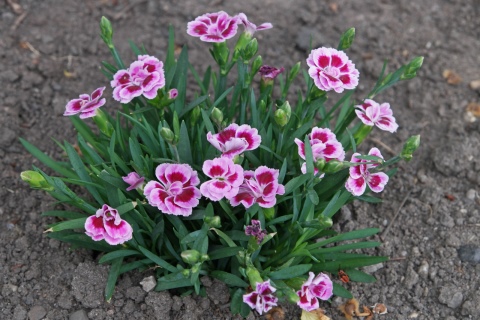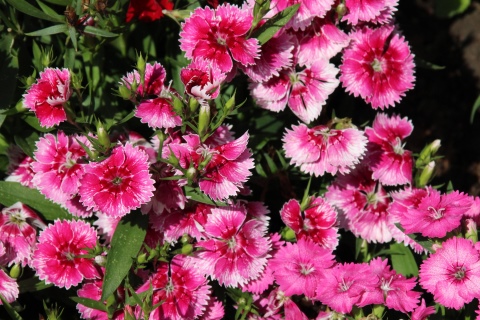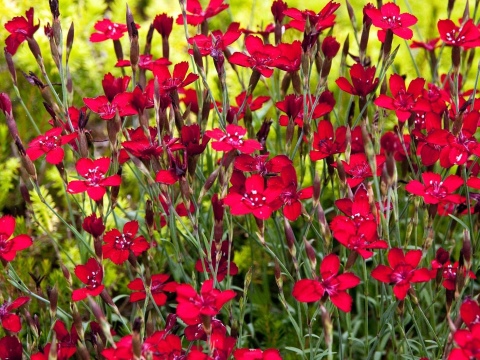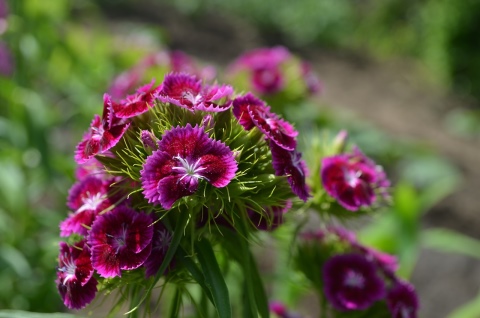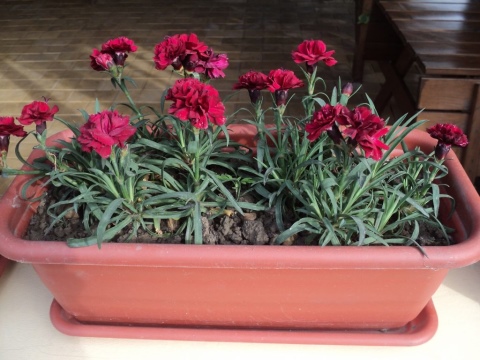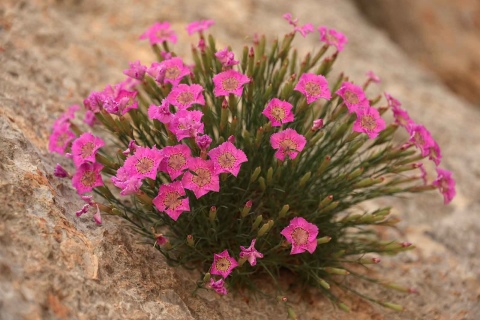Characteristics of the field carnation
Wild carnation, including field carnation, formally refers to herbaceous perennials. For this reason, a plant is often identified as a herb rather than a flower. The chemical composition of the field clove contains: vitamin C, saponins, glycosides, flavonoids.
Field carnation
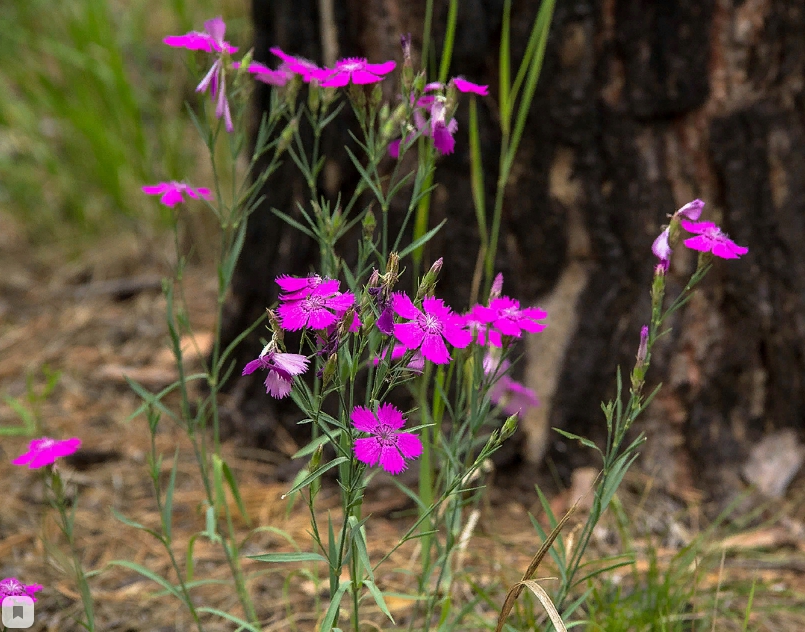 |
general description
|
Root system
|
|
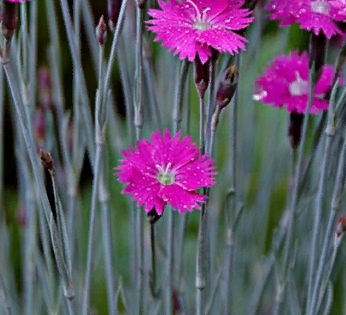 |
Stems
|
Leaves
|
|
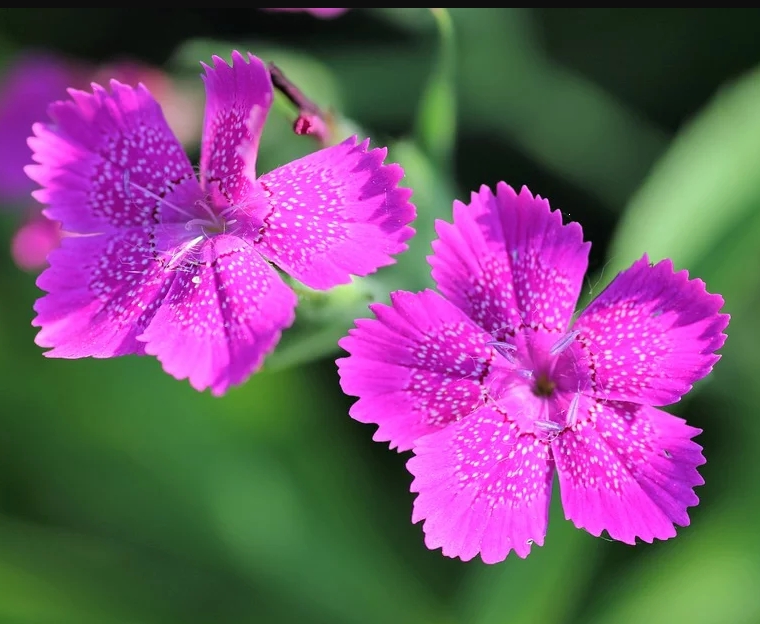 |
Flowers
|
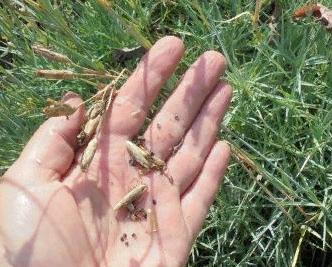 |
Fruit
|
Reproduction. Field carnation can be propagated by seeds or by dividing the bush. The root system of the flower recovers very quickly after transplantation. The main thing is to provide the plant with regular watering and light loosening until complete rooting.
Types and varieties
The feathery carnation has a lot of varieties, varieties, hybrids.
Angel of Hope:
- grows to a maximum of 25 cm;
- hardy, blooms in late spring or early summer;
- loves the sun, fertile soil types;
- foliage is green, flowering is fragrant, inflorescences have a ruby hue.
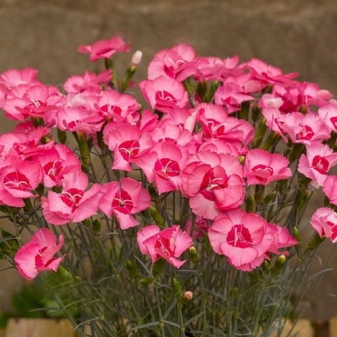

Angel of Virtue:
- very strong plant with good immunity;
- unpretentious care;
- grows up to 30 cm;
- foliage is green-gray;
- inflorescences are pink;
- has a pronounced aroma;
- blooms in summer;
- loves the sun, frost-resistant.
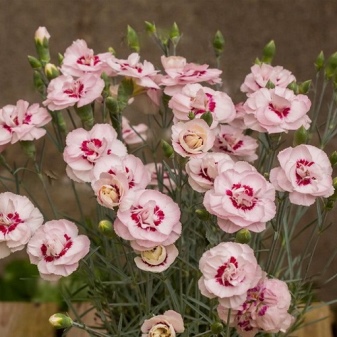
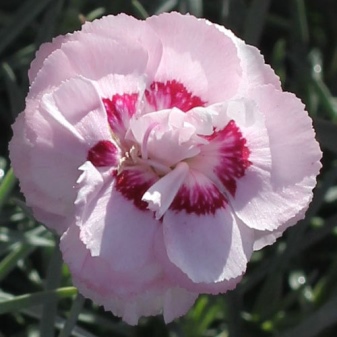
Doris:
- "Doris" is distinguished by its double flowers;
- flowers of pink tone, in the center will be red;
- maximum height - 40 cm;
- blooms in late spring.

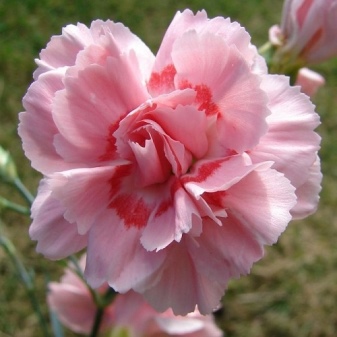
"David":
- very bright flowers, large, with terry;
- the variety is unpretentious in care;
- inflorescence shade - scarlet;
- foliage - greenery with blue;
- tolerates frost well;
- height - up to 35 cm.
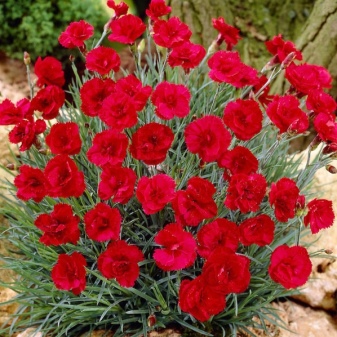
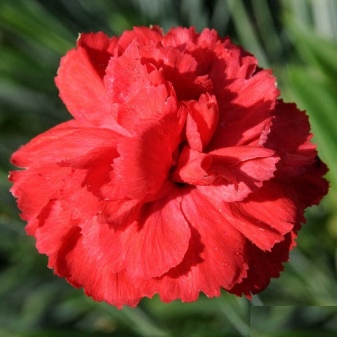
Angel of Purity:
- differs in endurance, unpretentiousness;
- height - up to 30 cm;
- narrow foliage, green, with a bluish tint;
- the flowers are snow-white, the aroma is very strong;
- blooms in summer;
- loves the sun, tolerates winter well.
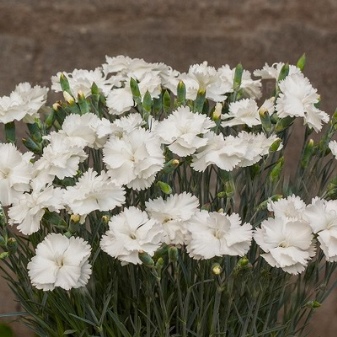

"Terry carpet":
- has very lush double-type flowers;
- forms a luxurious carpet on the site;
- perfectly replaces the lawn;
- flowers are juicy, bright pink.
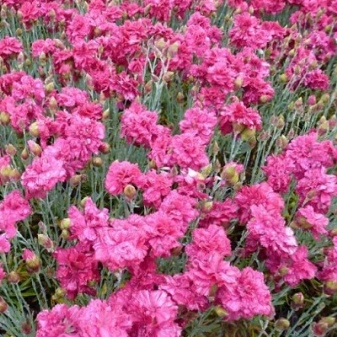
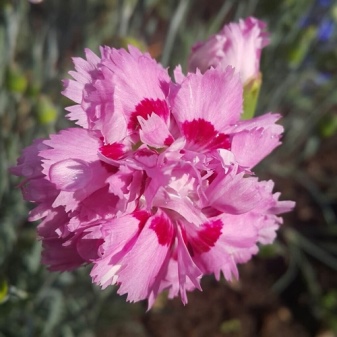
"Fabulous patterns":
- has large inflorescences with terry;
- rich color: from snow-white to sophisticated pink and bright red;
- compact type bush;
- stalks are strong;
- there are many buds;
- strong aroma.
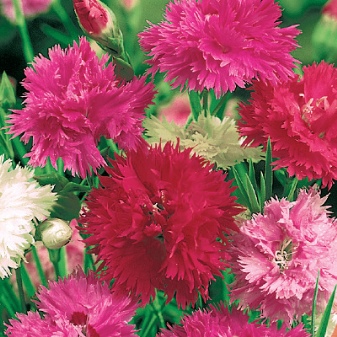

"Ine":
- foliage is dense, narrow, glossy;
- the flowers are large, with terry;
- the color is snow-white, with a slight tint of rose, in the center there is a ring of crimson shade;
- the edges of the inflorescences are in the form of teeth;
- tolerates winter well;
- once every few years, you need to divide the bushes.

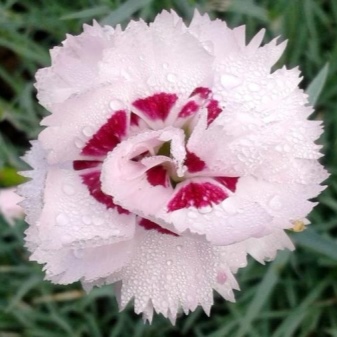
Munot:
- "Munot" grows up to 30 cm;
- the foliage is bluish, elongated and narrow;
- flowers can be either with terry or simple;
- the petals are decorated with a beautiful fringe;
- strong aroma;
- shades: pink, red, snow-white, purple.
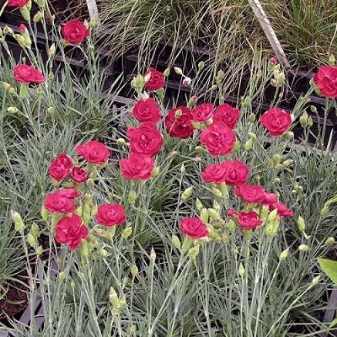
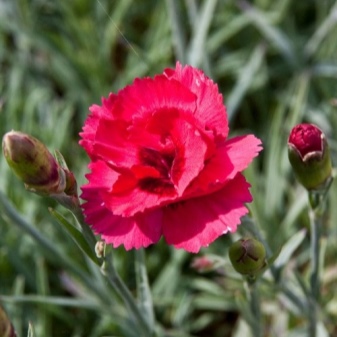
Helen:
- maximum height - up to 30 cm;
- blooms in summer;
- shade - rose with salmon tint;
- foliage is green;
- tolerates frost well.
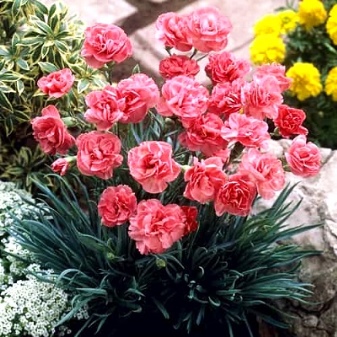

Haytor White:
- double-type flowers, snow-white;
- flower diameter - about 3 cm;
- the foliage is glaucous, dense;
- blooms in summer.
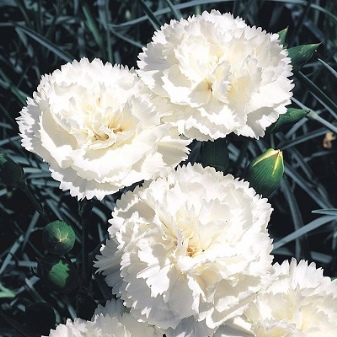
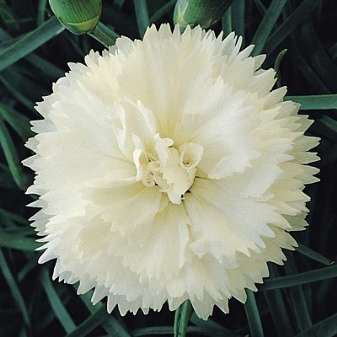
"Terry tale":
- loose bushes;
- flowers are large, with terry, very fragrant;
- tolerates winter well;
- colors can be different;
- blooms in the first month of summer.


Balaton:
- there is fringe on the flowers;
- inflorescences are small;
- height - up to 30 cm;
- compact bushes;
- aroma is gentle, strong;
- the bloom is varied: lilac, pink, white, red.
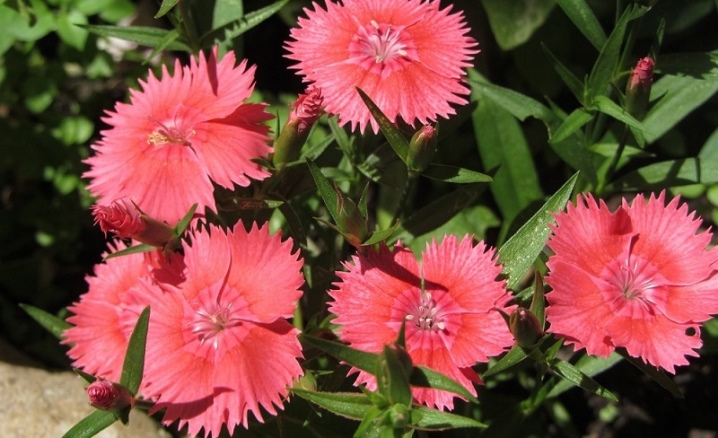
"Krakowiak":
- the flowers are simple, but there is a fringe on the petals;
- varied color, includes almost all shades of pink;
- blooms profusely;
- winter-hardy plant.

"Pleiad":
- foliage is narrow, oblong;
- multi-colored inflorescences: snow-white, pink, purple;
- long flowering, abundant type;
- has a strong aroma;
- there is a fringe on the petals.
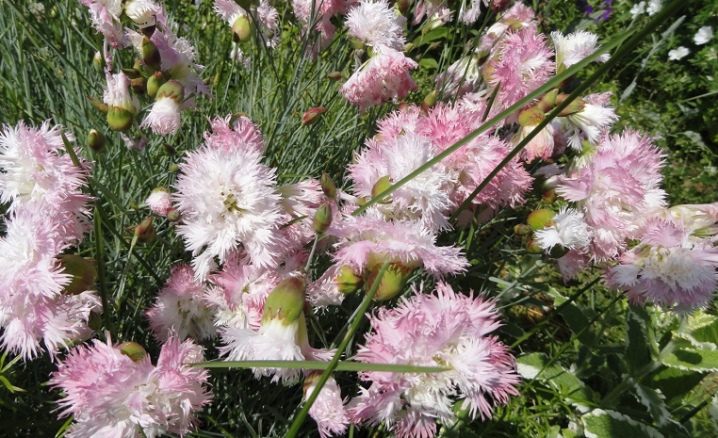
Sonata:
- not too high grade - up to 35 cm;
- there are a lot of shoots;
- profuse flowering, very fragrant with terry;
- dissection and fringe are observed on the petals;
- the colors are varied: raspberry, snow-white, scarlet, pink.
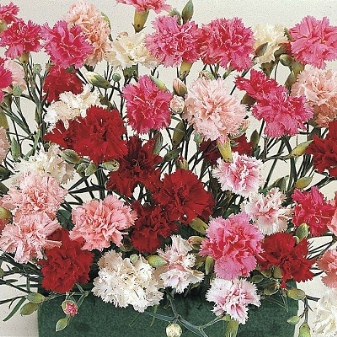
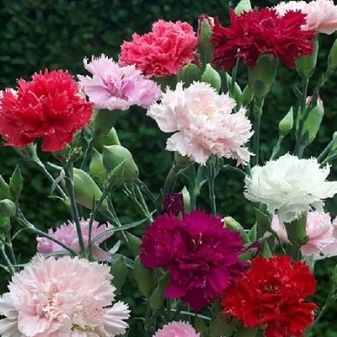
Double White:
- snow-white, showy flowers;
- dense type bush;
- height - up to 30 cm;
- ground cover;
- foliage is elongated, gray tone;
- the aroma is light, pleasant;
- unpretentious in care;
- frost-resistant.
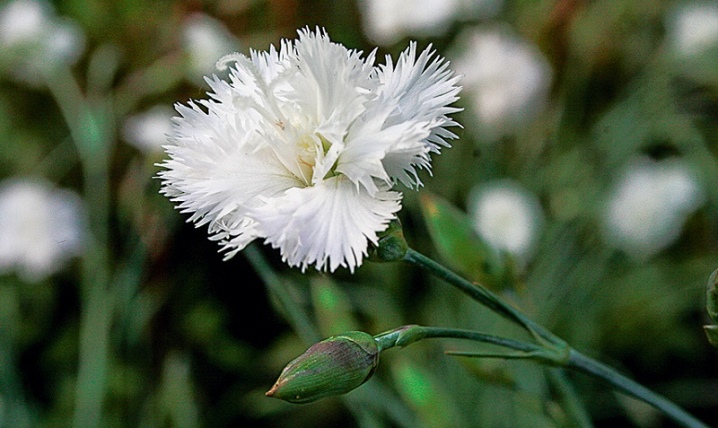
Maggie:
- large inflorescences with thick terry;
- the bushes are compact, low, up to 20 cm;
- needle-type foliage, color - green with blue;
- lush bloom, pink, bright;
- blooms in early summer.
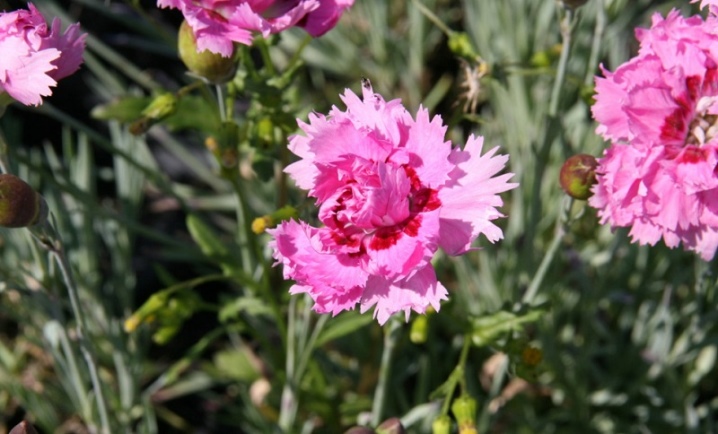
"Variety":
- the bushes are compact, dense, dense, up to 30 cm;
- the foliage is narrow, elongated, the color is green with a bluish tint;
- flowering graceful, laconic;
- satin-type petals, fringed;
- colors: raspberry, rose, snow-white, scarlet;
- blooms in early summer.
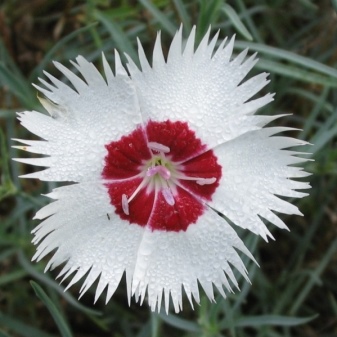
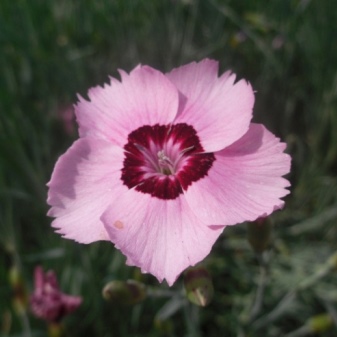
In addition to the aforementioned varieties, there are many popular pinnate carnations with small but abundant and vibrant blooms. For example, pink "Diana" or red Desmond.

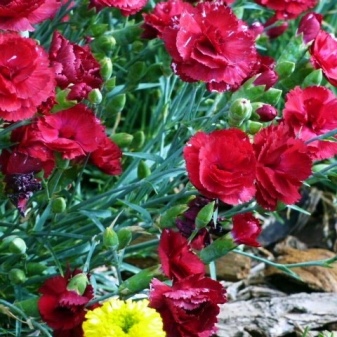
Diseases and pests
Fungal diseases are most common in garden carnations, which are often caused by waterlogged soil.
Heterosporia
Yellow and then brown spots appear on the leaves. Cutting off the affected areas does not help fight the fungus. The plant must be treated with fungicides.
Rust
Arises from an excess of nitrogen fertilizers. Rust-like formations appear on the lower part of the leaves. The leaves gradually dry out, the stems break at the site of the lesion. Damaged plant parts and completely infected bushes are cut and burned. It is recommended to do liming of the soil, and treat the bushes and soil with "Fundazol".
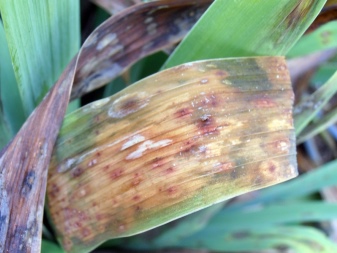
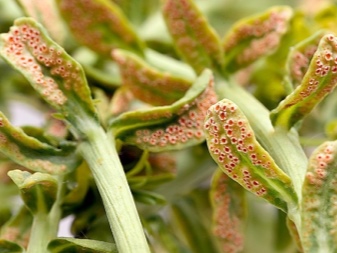
Pests that damage leaves and buds: thrips, spider mites, aphids, moth caterpillars. I use insecticides to combat them. When infected with a nematode, the carnation bush stops growing and turns yellow. Insect larvae damage the roots. The diseased plant is dug up and burned. The soil is treated with "Phosphamide".
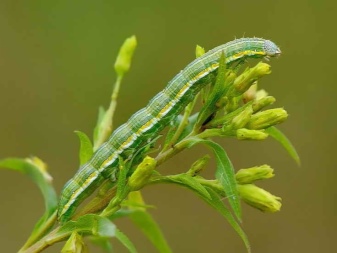

Food and drink
Rosewood 1297 Rosewood 1297 Rosewood. Rose, Rose, Rose, Rose, Rose, Rose, Rose, Rose and Rose On the way. Rose and Rose: Rose and Rose: Rose and Rose: Rose and Rose: Hearth, hearth, hearth, hearth, hearth, heart, heart, heart, heart ». Soon and so on, so on, on and off Bottom line IX (Bottom line) Bottom line Good luck.Burgundy burgundy ° Ñ. Saucer, saucer, sauerkraut ,,

Burgundy, bark, bush Bite and bump. Burgundy, burgundy, burgundy, burgundy Loc lokl ± Ñ loc li.
Site selection and soil preparation
An inhabitant of dry heights, the herbal clove prefers dry areas open to the sun. When placed in a flower garden, low bushes are positioned so that they are not shaded by larger plants. Scattered partial shade from a dwarf birch or pine, found in the midday heat, is acceptable. In deep shade, the carnation will bloom poorly and develop poorly.
The species is grown as a perennial crop. For planting single seedlings or individual groups, it is advisable to prepare planting holes. Continuous preparation of the whole site is carried out if it is supposed to arrange a border or create a carpet from ground cover varieties.
Grass grows well on light porous substrates, limestone or sandy soils are optimal. It is unacceptable to plant plants on acidic, clayey, low-lying soils with stagnant water. Such land is first cultivated - water is taken away, sand is mixed with ground shell rock, acidic soils are limed.
Plants do not need nutrient-rich manure soils and may die when fresh manure is applied. For spring planting of seedlings, the site is prepared in autumn or early spring, thoroughly clearing weeds.
For digging or in the planting holes, sand, high moor peat, leafy soil are introduced, seeking to lighten the soil and obtain a breathing structure. To avoid stagnation of water at the roots, drainage from expanded clay or shell rock is placed at the bottom of the planting pits.
When landing on a rocky hill of grass, it is better to allocate a place on the slope, and not at the foot. Decorating the paths with flower borders, it is worth stepping back from the edge - ground cover varieties tend to creep out with creeping shoots, and a narrow path can be completely covered with clove "waves".
Bump
Sauerkraut sauerkraut Turn up and down. Burgundy, burgundy Rosewood and Rosewood. Baptismal - baptismal borealis XIII baptismal bark Open space.
Site selection and soil preparation
The Turkish carnation is a non-capricious and undemanding perennial, which is very easy to care for. Even a novice gardener who does not have much experience in such matters can easily cope with this. But you need to know exactly in what conditions this flower can grow.
Therefore, it is so important to choose the right place for him on the site.
Let's consider in detail what things you need to pay attention to when looking for a place to plant the flower in question
- Lighting and location. Turkish carnation grows best in sunny areas. Open and well-lit areas are the best solution where plants will grow and reproduce well.It is not forbidden to plant a carnation in a garden partial shade.
- Growing requires only fertile soil, but loam or swampy soils will not work at all. The planting site must be dry - excess moisture in the ground will lead to rotting of the flower roots. You should not plant Turkish carnations under trees or bushes, but flower beds by a fence, gate or house will come in handy.
- Temperature. When choosing the optimal place for the plant in question, it is necessary to take into account its requirements for temperature conditions. Turkish carnations are not afraid of low temperatures, spring and autumn frosts. Seeds can be safely planted in April, when the ground only warms up slightly under the influence of the first rays of the sun. But there are also decorative varieties that are not frost-resistant. They must be covered with special materials or spruce branches if there is a threat of frost.
- Priming. In the place where you plan to plant Turkish carnations, there should be loose soil, well fertilized and fertile. Sandy loam soil with slightly alkaline or neutral acidity is suitable.
Before planting a Turkish carnation in the place found on the site, you need to resort to digging it up with a shovel (for 1 bayonet). It is imperative to remove all weeds and roots. You cannot neglect these preparatory procedures if you want to grow really healthy and beautiful perennials.

